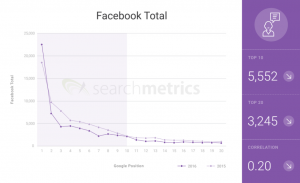The journey through the future of customer data reveals a landscape where adaptation is key.

As the marketing landscape evolves with over 12,000 tools vying for attention, understanding the challenges and opportunities is more critical than ever. The right insights on first-party data can empower you to stay ahead of the curve — and take advantage of new opportunities to engage with your customers.
However, walking the line between data and privacy can be challenging without the right strategies. Navigating through this involves five critical areas:
1. First-party data
While it’s not a new subject, first-party data remains a significant challenge for organizations globally. The impending deprecation of third-party cookies is poised to catch many brands off guard. Browsers are already implementing various ad and cookie-blocking forms, with Google Chrome set to block third-party cookies by default in 2024. This shift underscores brands’ need to reassess and fortify their first-party data strategies.
2. Triple down on privacy
In an era where privacy is no longer confined to specialized conferences but is part of everyday consumer conversations, it’s crucial to understand the evolving landscape. Regulations like GDPR and CCPA have reshaped consumer expectations, and privacy has become a potent differentiator. Businesses must grasp the intricacies of data flow within their organizations, fostering transparency and value in their privacy practices.
3. Product differentiation through privacy
Privacy isn’t just a regulatory concern; it’s a strategic differentiator. A notable example is Apple, leveraging privacy as a competitive edge against global competitors. Understanding that consumers value their information, businesses must adapt, ensuring transparency and logical use of data. As privacy becomes a global conversation, companies must prepare, understand data flows and conduct regular audits of their data dictionaries.
4. Embracing zero-party data
Amidst the challenges, there’s a positive note—consumers still desire personalization. Beyond first-party data, there’s the concept of zero-party data—information explicitly shared by consumers. By directly asking for information to enhance user experiences, businesses can build trust and offer genuine value in exchange for data.
5. Shifting from assumed behaviors to explicit data requests
As marketers, it’s time to rethink strategies from assumed behaviors to explicit data requests. Focus on understanding user motivations rather than generic demographics. The future lies in asking for explicit information that enhances user experiences, fostering a deeper connection between brands and consumers.
Join Zack Wenthe, Treasure Data’s CDP evangelist, in this informative MarTech session as he explores what’s new with first-party data strategies and tips for avoiding getting caught off guard by new policies and regulations.
After this session, you’ll be able to:
- Understand the impact of changing regulations and privacy policies.
- Navigate the coming changes from third-party cookie deprecation (yes, it’s still happening).
- Implement new ideas into your data strategy to help improve your connection with your customers.
Attend this session and learn how to harmoniously blend data and privacy to create personalized and valuable user experiences.
The post The future of customer experience lies in first-party data appeared first on MarTech.
(2)







